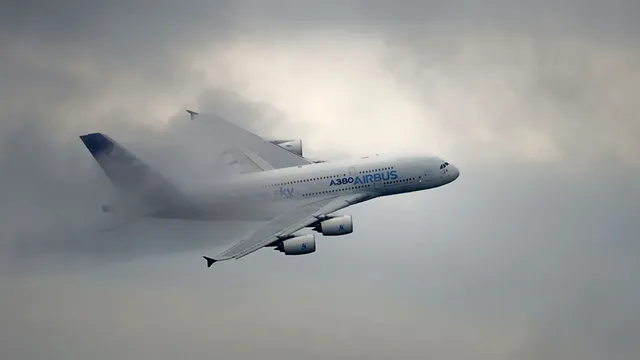
The Andean condor can reach altitudes of 21,300ft (6.5 km) .
Our skies are getting bumpier, making the need to understand and predict turbulence increasingly urgent. Researchers propose birds could provide clues.
When you look up, the sky may seem calm – still even – but air is always on the move. Fluid, it flows like water, with eddies and currents, sometimes smooth and serene, sometimes tumultuous and violent. Turbulence is one of the most unpredictable of all weather phenomena. And research shows that severe turbulence is becoming more likely as the planet warms.
If an aircraft strikes it, the most turbulent air can cause injuries or even death, as well as structural damage to planes. On Tuesday, a Singapore Airlines flight from London encountered severe turbulence: 31 people were injured, and one died. Passengers aboard the Boeing 777-300ER told the BBC the plane began to tilt and shake, before dropping suddenly, and "people and objects were thrown around the cabin".
Could there be better ways to predict and cope with turbulence? Some researchers believe that answers lie in the animal world.
Birds often encounter choppy skies. While only a few species reach the height of a cruising commercial aircraft, studying how they respond at lower altitudes could help meteorologists build better models to predict turbulence, says Emily Shepard, an expert in bird flight and air flow at Swansea University in Wales. And that's not all we could learn from our avian friends: some species have adapted to deal with "extreme turbulence", she says. Analysing how they exploit it to their advantage could inform aircraft design, especially in urban environments where smaller aircraft and unmanned aerial vehicles (UAVs) could fly.

Stormy weather is easy to spot, but clear air turbulence is harder to predict.
According to a 2024 study, aircrafts encounter moderate to "severe-or-greater" turbulence 68,000 times every year. Turbulence is defined as "an irregular motion of the air" caused by eddies and vertical currents, and is associated with weather events such as fronts, wind shear and thunderstorms. Turbulence can cause a few uncomfortable bumps – or throw an aircraft out of control, inducing "chaotic rolls, pitches and yaws".
Modern aircraft are equipped with sophisticated weather radar systems that pilots use to identify and navigate around areas of turbulence. "We can successfully predict around 75% of turbulence up to 18 hours ahead," says Paul Williams, an atmospheric scientist at the University of Reading.
However, there are many types of turbulence – and some can be harder to spot. The severe turbulence that struck the Singapore Airlines flight is often caused by invisible "clear air turbulence". This can strike without warning, and is one of the biggest causes of weather-related aviation accidents.
Clear air turbulence occurs at high altitudes, where aircraft cruise in seemingly calm blue skies. It can't be seen by the naked eye and is undetectable by onboard sensors. Even satellites can't see this kind of turbulence, only the structure and shape of the jet stream which may hint at its presence. Pilots often have to rely on any aircraft flying the same path ahead of them of them to report clear air turbulence, so they can adjust their path.